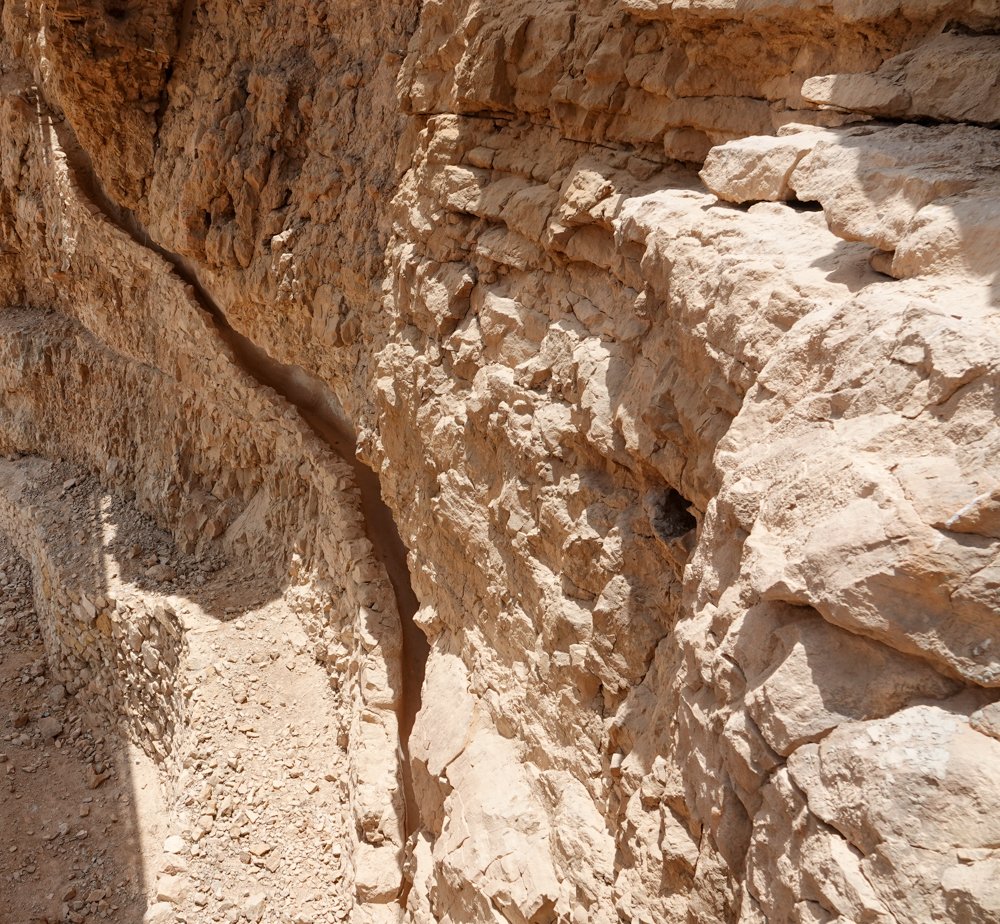Masada Water
This is my continuation from Masada National Park. My second main thought on visiting Masada was how did they get their water? This area only gets about one inch of rain per year. I didn’t find any springs on the plateau. We saw baths with elaborate frescoes on the walls, hot pools, cold pools, and steam rooms, so they used lots of water. There were probably several thousand people living up there. And finally, being a Californian where we are currently suffering from a severe drought, I’d like to know.
The park was keenly aware of my thoughts about water. They had the answers for me. Herod’s engineers built two dams near the peak of the mountains. Aqueducts captured the water flowing through the wadis (dry ravines) and channeled it into the cisterns. These large reservoirs pocked the western ridge of Masada. They collectively had a capacity of over ten million gallons. But how did it get to the top of the mountain? They had pack animals and slaves carry the water from cliffside cisterns to ones at the surface of the plateau, by way of a hidden staircase.
The park had an active exhibit of Masada’s water system. You can see the model in the first photo. I arrived after the demonstration had started so I didn’t hear it all and didn’t get to video it. But the guide poured a pitcher of water onto the “mountains” on the right side of the exhibit, and we watched the water follow the channels and fill the cisterns.
The next photo is on the plateau, and you can see the backside of a cistern in the lower right quadrant, with a bridge over it.
The 3rd photo shows a water channel in the side of the mountain just like in the water exhibit in the first photo.
The 4th photo is just a closeup of a water channel in the mountain side. I’m not sure how they hung onto the side of the mountain in order to create these channels.
The last photo was the smallest water feature that we saw, a bath, but I used it instead of the larger ones because of the remnants of the ancient frescoes. It must have been a beautiful bath.





